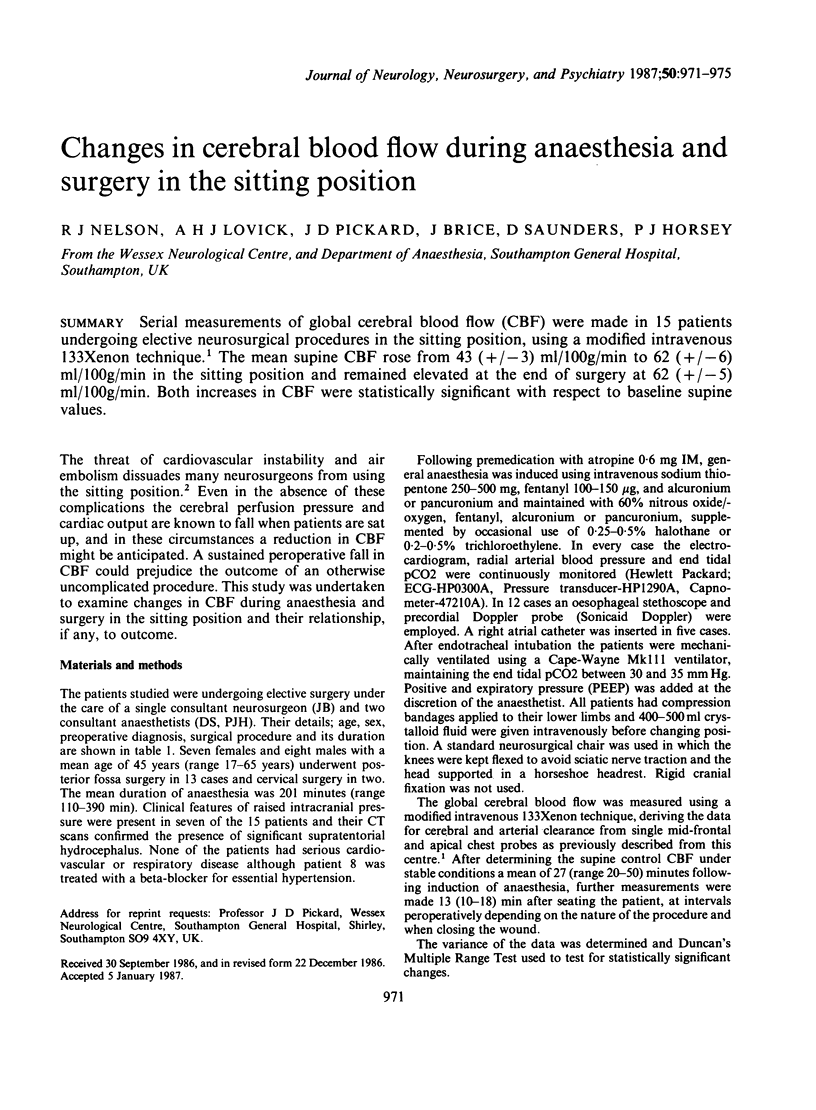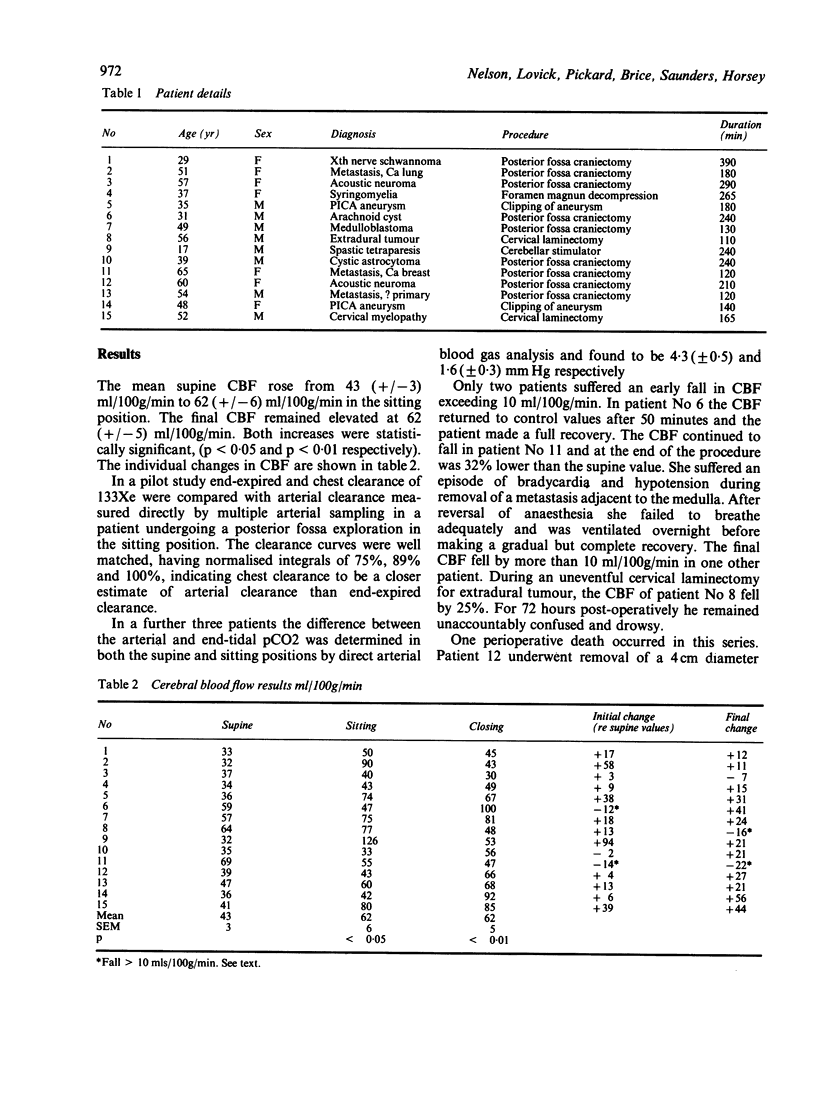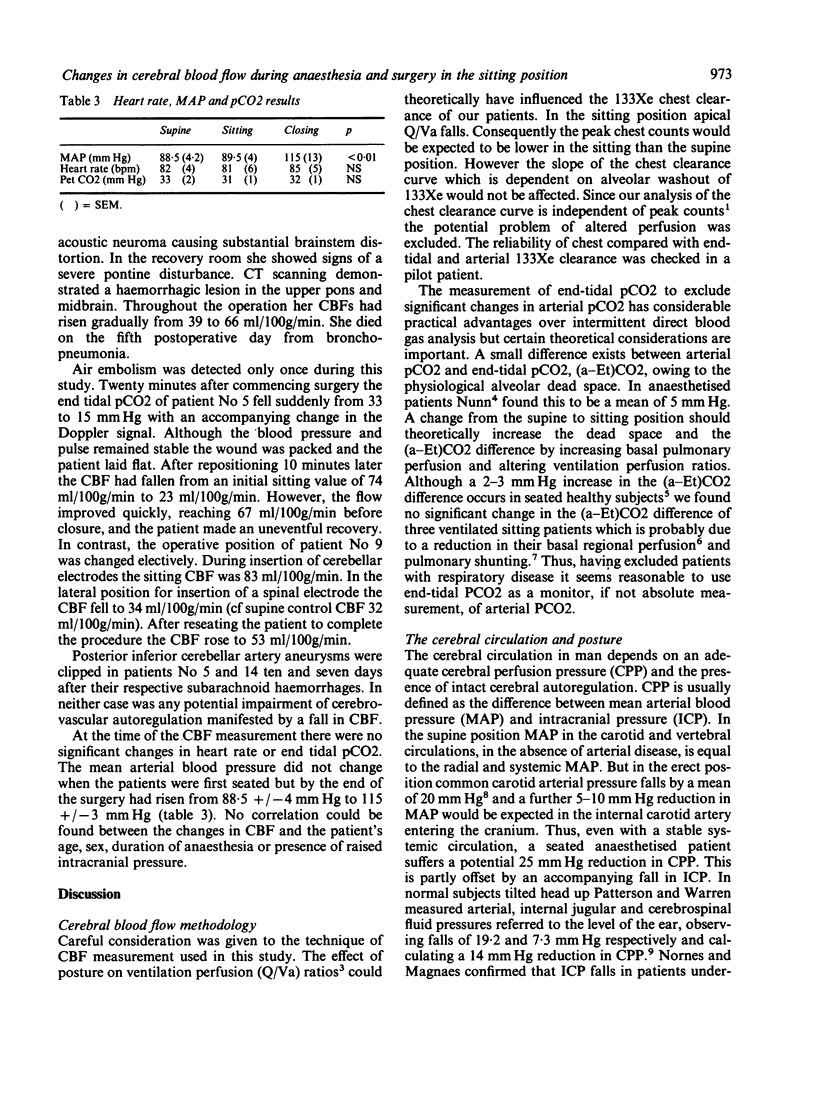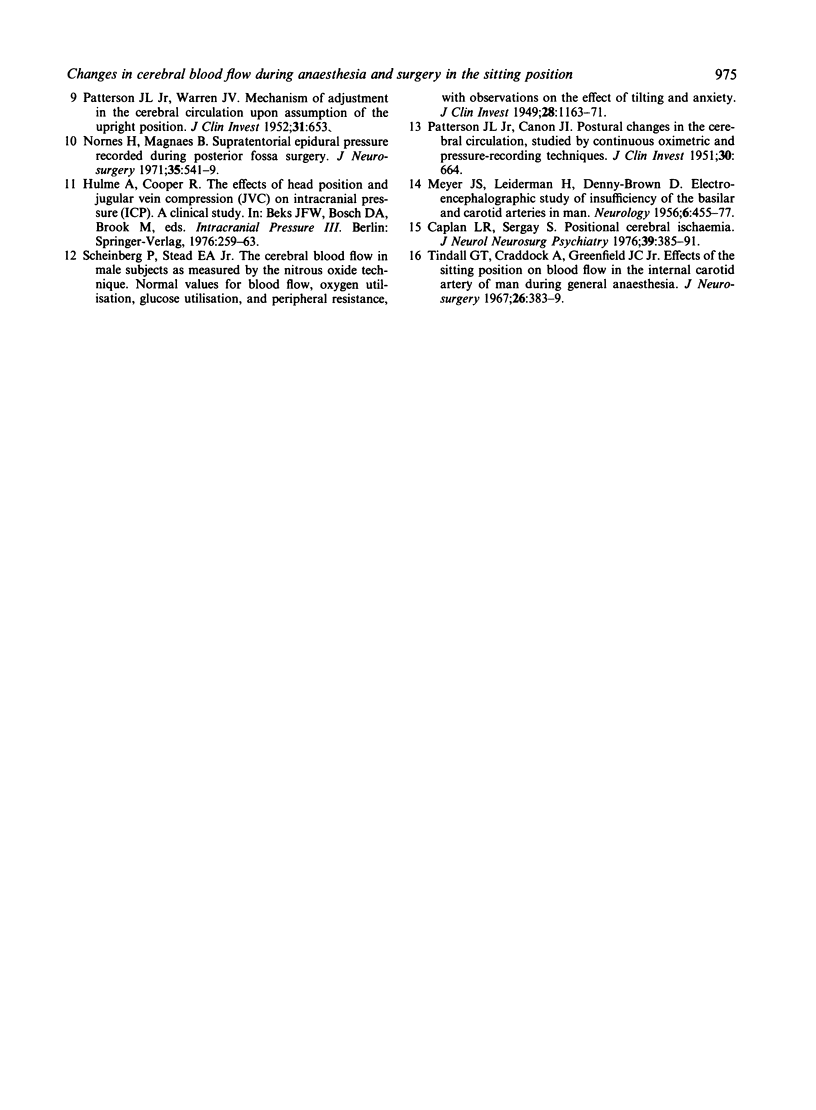Abstract
Serial measurements of global cerebral blood flow (CBF) were made in 15 patients undergoing elective neurosurgical procedures in the sitting position, using a modified intravenous 133Xenon technique. The mean supine CBF rose from 43 (+/-3) ml/100g/min to 62 (+/-6) ml/100g/min in the sitting position and remained elevated at the end of surgery at 62 (+/-5) ml/100g/min. Both increases in CBF were statistically significant with respect to baseline supine values.
Full text
PDF




Selected References
These references are in PubMed. This may not be the complete list of references from this article.
- Amis T. C., Jones H. A., Hughes J. M. Effect of posture on inter-regional distribution of pulmonary perfusion and VA/Q ratios in man. Respir Physiol. 1984 May;56(2):169–182. doi: 10.1016/0034-5687(84)90101-4. [DOI] [PubMed] [Google Scholar]
- Caplan L. R., Sergay S. Positional cerebral ischaemia. J Neurol Neurosurg Psychiatry. 1976 Apr;39(4):385–391. doi: 10.1136/jnnp.39.4.385. [DOI] [PMC free article] [PubMed] [Google Scholar]
- Dalrymple D. G., MacGowan S. W., MacLeod G. F. Cardiorespiratory effects of the sitting position in neurosurgery. Br J Anaesth. 1979 Nov;51(11):1079–1082. doi: 10.1093/bja/51.11.1079. [DOI] [PubMed] [Google Scholar]
- LARSON C. P., Jr, SEVERINGHAUS J. W. Postural variations in dead space and CO2 gradients breathing air and O2. J Appl Physiol. 1962 May;17:417–420. doi: 10.1152/jappl.1962.17.3.417. [DOI] [PubMed] [Google Scholar]
- Landmark S. J., Knopp T. J., Rehder K., Sessler A. D. Regional pulmonary perfusion and V/Q in awake and anesthetized-paralyzed man. J Appl Physiol Respir Environ Exerc Physiol. 1977 Dec;43(6):993–1000. doi: 10.1152/jappl.1977.43.6.993. [DOI] [PubMed] [Google Scholar]
- MEYER J. S., LEIDERMAN H., DENNYBROWN D. Electroencephalographic study of insufficiency of the basilar and carotid arteries in man. Neurology. 1956 Jul;6(7):455–477. doi: 10.1212/wnl.6.7.455. [DOI] [PubMed] [Google Scholar]
- NUNN J. F., HILL D. W. Respiratory dead space and arterial to end-tidal carbon dioxide tension difference in anesthetized man. J Appl Physiol. 1960 May;15:383–389. doi: 10.1152/jappl.1960.15.3.383. [DOI] [PubMed] [Google Scholar]
- Nornes H., Magnaes B. Supratentorial epidural pressure recorded during posterior fossa surgery. J Neurosurg. 1971 Nov;35(5):541–549. doi: 10.3171/jns.1971.35.5.0541. [DOI] [PubMed] [Google Scholar]
- Scheinberg P., Stead E. A. THE CEREBRAL BLOOD FLOW IN MALE SUBJECTS AS MEASURED BY THE NITROUS OXIDE TECHNIQUE. NORMAL VALUES FOR BLOOD FLOW, OXYGEN UTILIZATION, GLUCOSE UTILIZATION, AND PERIPHERAL RESISTANCE, WITH OBSERVATIONS ON THE EFFECT OF TILTING AND ANXIETY. J Clin Invest. 1949 Sep;28(5 Pt 2):1163–1171. doi: 10.1172/JCI102150. [DOI] [PMC free article] [PubMed] [Google Scholar]
- Standefer M., Bay J. W., Trusso R. The sitting position in neurosurgery: a retrospective analysis of 488 cases. Neurosurgery. 1984 Jun;14(6):649–658. doi: 10.1227/00006123-198406000-00001. [DOI] [PubMed] [Google Scholar]
- Tindall G. T., Craddock A., Greenfield J. C., Jr Effects of the sitting position on blood flow in the internal carotid artery of man during general anesthesia. J Neurosurg. 1967 Apr;26(4):383–389. doi: 10.3171/jns.1967.26.4.0383. [DOI] [PubMed] [Google Scholar]


